To say co-creator Azi Ansari’s Master of None has captured the plight of being a Millennial and single is an understatement. The Netflix-produced take on the modern struggles of being young and alone graces pulse points far beyond the hook-up seeking stock characters we expect.
Don't just take this one jaded single guy's opinion: Master of None has a 100% fresh rating on Rotten Tomatoes, just won the Critics Choice Award for Best Comedy Series, listed among many Top 10 lists for 2015 and as The New York Times acclaims, “the year's best comedy straight out of the gate.”
While the show is often compared to other introspective hits like Louie, Ansari and co-creator Alan Yang hit on topics all men of our age deal with but are rarely voiced.
The anxiety while waiting for the response to a date invite text.
Trying to be supportive without showing your internal life-is-over freakout when the condom breaks with a new partner.
The guilt and growth when you’re old enough to realize you’ve never respected your parents as real people – who’ve had a lifetime of tribulations to give you what you have.
But my personal favorite scene that succinctly defines dating and relationships in your late 20s/early 30s happens when Ansari’s character Dev has a daydream about his nuptial vows while attending the wedding of a couple who appear truly in love:
Wedding Officiant: Do you, Dev, take Rachel to be your partner in a possibly outdated institution in order to have a quote-unquote normal life? Are you ready to give up an idealistic search for a soulmate and try to make it work with Rachel so you can move forward with your life?
Dev: I do
Wedding Officiant: Do you, Rachel, promise to make a crazy eternal bond with this gentleman who you happen to be dating at this stage in your life when people normally get married?
Rachel: I do
Wedding Officiant: I now pronounce you two people who might realize they’ve made an unfortunate mistake in about three years.
Writing, acting, directing, and cinematography are always praised when a film or show reaches the audience on a deeper level, but there’s an essential element that defines moods and characters:
Set design.
We spend quite a bit of time in Dev’s apartment over the course of the season, including the majority of the penultimate episode, “Mornings,” as we witness Dev and Rachel’s relationship evolve from exciting and new to frustrating and broken.
The constructed apartment set is a defining character of its own, sharing with the audience who Dev is in the same way Solo’s bucket-of-bolts Millennium Falcon and Doc Brown’s chaotic garage illuminate delicate character traits that dialogue and acting simply can’t begin to extrapolate.
Your own place is no different. What you wear helps define you to other people; it’s why Primer has such a focus on presenting your best self. Not for vanity, but to take control of how others perceive you. When you bring someone into your home they’re getting a glimpse into who you are. How you see yourself. Your values. Your priorities.
You can decide to intentionally choose how people will see you, or you can passively let your indifference do it for you.
I had the pleasure of interviewing Emmy award winning production designer Amy Williams on her process for designing Dev’s apartment and how you can reveal your own character by purposefully composing your own place.
Primer: While working on a film or show, you’ve mentioned that you create Lookbooks for producers, collections of photos you’ve put together that represent the themes, moods, and style that you have in mind for specific sets. I imagine this makes the next step of knowing what to shop for much easier. Do you have any guidance for guys looking to design or revamp their own places on creating Lookbooks? Where do you recommend guys go to find inspiration?
Amy Williams: When I start my Lookbooks for a set, I usually start with a painting, photograph or other piece of artwork for use as broad stroke inspiration. A piece of art conveys a sense of mood, tone and color palette. From there I pull reference images of interiors and architectural elements that speak to me or a certain character's aesthetic. I then hunt for references with specific details, such as furniture, decorative items and plants. Assembling the right images takes a good amount of time and research. It's a hunt, but finding the right inspiration or object has it's own payoff. I think Pintrest is a great resource for images. It's more curated than just doing a Google image search.
Pages from Amy Williams's Lookbook created for Master of None
When a guy is moving into his first real place, it can be incredibly daunting with such a blank canvas. How do you begin outlining a set like an apartment?
I start with my favorite piece which is usually, for me, a piece of artwork. Sometimes it's an interesting lamp or a chair. Start with the one thing you really love and build your collection to support that object. For Dev's apartment, the most important piece was the sofa. Finding the perfect one for Aziz's character was important. It's where our characters spend the most time and it's one of the the largest objects in the space. A sofa speaks volumes about the character. Aziz and I went back and forth for awhile looking for the right one. We looked at hundreds, purchased 4 or 5 and eventually the brown leather Danish Mid-century Modern sofa from Craigslist made the cut.
Dev’s apartment is expertly modern because of its collection of different design styles such as Mid-century Modern, 70s and 80s details, as well as industrial fixtures. What’s your process for finding balance when combining different styles or periods?
An eclectically styled space is an excellent way to express your individual taste. I find it adds history, life, personality and it's perfect for those that want to decorate their space slowly over time. I find the smartest way to meld several different styles is to stick with a complimentary color palette. It also helps to mix up textures, colors and patterns with a color balance.
Decorating an empty apartment on the budget of a guy in his 20s can feel impossible. Where do you recommend guys should look to buy affordable items with great design?
Craigslist, Etsy, Ebay, Habitat for Humanity Restore shops, vintage used furniture stores, flea markets, your parent's or grandparent's basements. But please, whatever you do, try to steer clear of Ikea. One or two items are fine, but you can find other options out there.
Say a producer comes to you and they need you to decorate a modern guy's apartment set on a budget of $1,000. How would you spend that money?
I would head to a thrift store or flea market and load up on the big furniture pieces, textiles and decorative items. Estate sales are a wonderful resource as well. Especially if you find an estate sale with the style of furniture you want. I love using unconventional items in place of traditional furniture pieces. In Dev's apartment, for example, we used an old woodworking table for his kitchen table and 1970s stereo speakers for side tables.
Here's what my budget breakdown might be to decorate a space for a $1K:
- Textiles: Rugs, curtains, throws, pillows, bedding – $150
- Seating: Arm chair, sofa, side chairs – $300
- Tables: Coffee table, side tables, multi-purpose tables (desk, dining, side) – $250
- Storage: Dressers – $125
- Lighting: Lamps – $100
- Decorative: Small items, plants, objects of interest – $75
Are you able to share the decorating budget of the apartment set? If a guy wanted to recreate something similar, how much would that cost him?
Let's just say you could easily decorate a similar apartment for the price of a C Class Mercedes. But that includes everything from furniture, hardware and appliances. To be fair we were lucky enough to get items on loan from Bed Bath & Beyond, Samsung, Apple and Kohler so we saved funds in those areas. We also kept his set on budget by sourcing items from Craigslist, Etsy, borrowing art on loan, implementing knock off designer furniture pieces and flea market finds.
Once a guy has some money and he’s ready to start replacing his post-college purchases, what should he invest in first?
Start with an amazing arm chair. A well-designed statement piece with a color and/or texture that makes you all warm and tingly. After a chair, I would say a sofa, rug, and dresser would be the next steps. Again, don't even bother with furniture you have to assemble yourself. And please, don't even bother with those ugly utilitarian plastic floor lamps. Same goes for the black plastic TV stand. You can find more interesting statement pieces for the same price. I promise!

Love this chair? It's an Eames style chair and ottoman. Learn more in our piece on iconic furniture.
I noticed Dev’s apartment has a lot of plants considering its modest size, and they really breathe life into it. I’d say more than anything, most guys completely ignore house plants. Can you share your thinking with the plants and how you go about introducing them into spaces?
I like to use plants for characters with nurturing and sensitive traits. Dev takes great care of his apartment and as an extension, I felt he was also a caring plant ‘parent'. Plants also add light and form to a space. Green sculptures if you will.
I would recommend introducing easy to care for plants until one's green thumb is ready. Succulents are great and sculptural. Other varieties that are easy to care for are snake plants, rubber trees, and philodendrons are great low light survivors.
When you’re working on a space and it’s just…you know, missing something, what’s your go-to solution?
Lighting! A cheap bright plastic lamp will really kill the look of a space. Lighting that gives off a soft and warm glow can do wonders. Dev's apartment has some fantastic 70s space age lamps and pendant lights. We also decorated his space with vintage industrial lights found in antique stores, flea markets and by Etsy designers.
I'm also a big fan of stacks of books. They're great conversational and expression pieces. Books also add a subtle color texture to a space. Depending on the space, either old dusty looking cloth bound hardcovers, kitschy 70's sci-fi paperbacks or large coffee table art books. In Dev's apartment we used a lot of stacks and collections of items. Our ‘Jack of all trades' character, Dev has a collection of Taschen coffee table books which demonstrates his appreciation for the arts as well as his variety of interests.
I need to know: Where did you find that amazing flip clock?
The clock on Dev's nightstand is a TWEMCO Quartz Calendar Wall Flip Clock BQ 38 (Gray). I can't take credit for the clock. Aziz researched and selected it himself specifically for the “Mornings” episode.
Follow Amy Williams on Twitter: spotonamy, Instagram: amyrwilliams, and her website: www.amyrwilliams.com



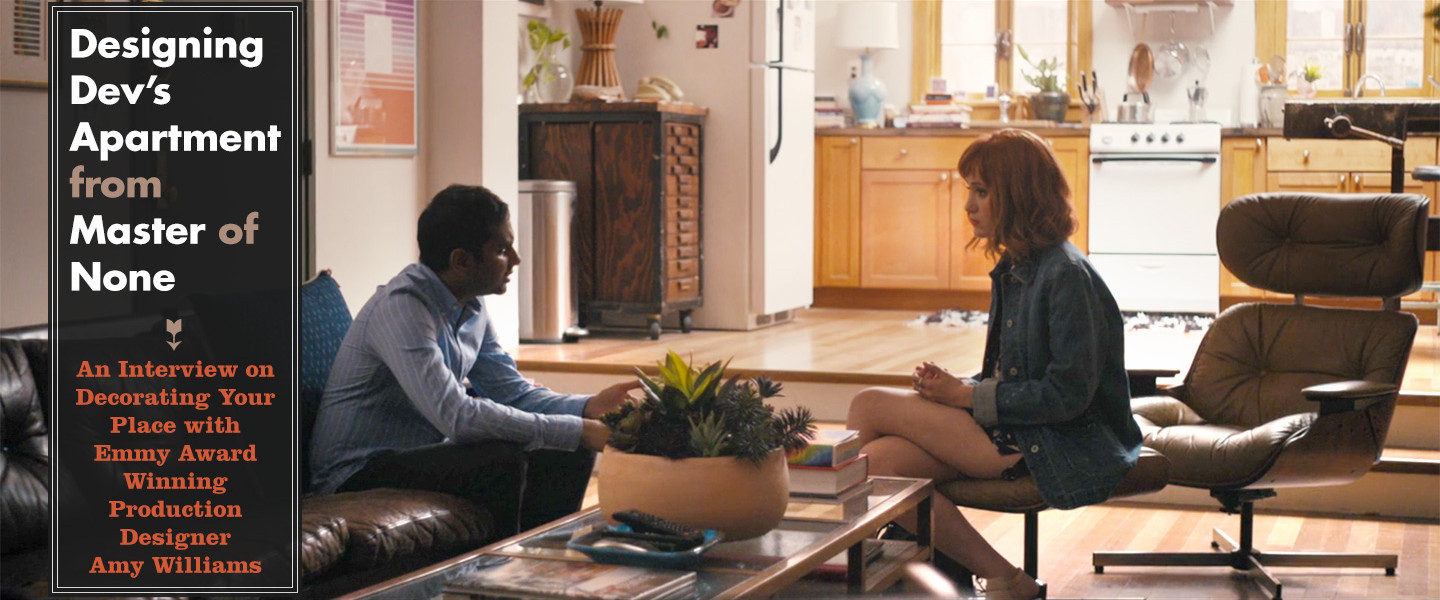

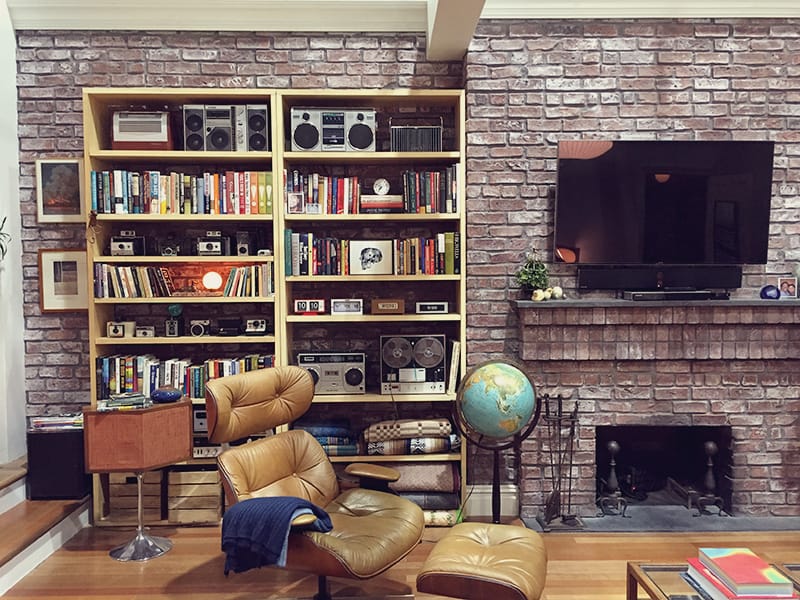



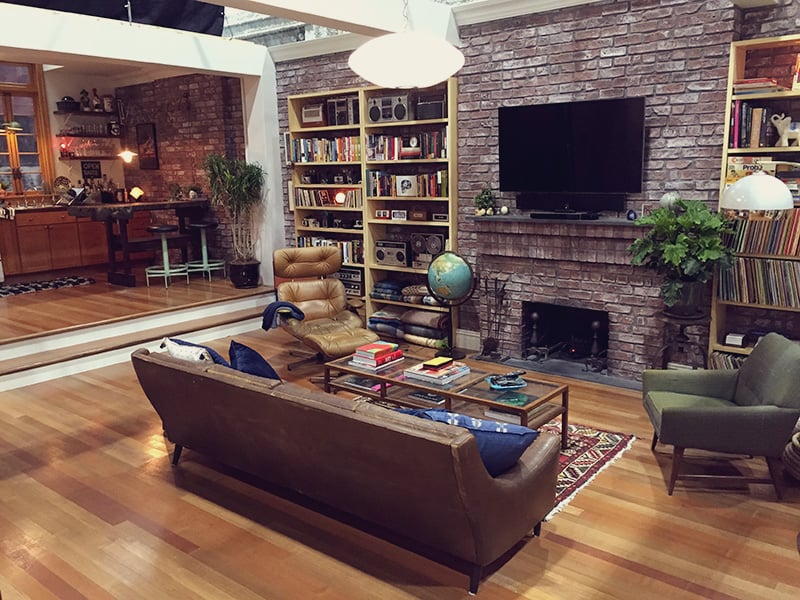

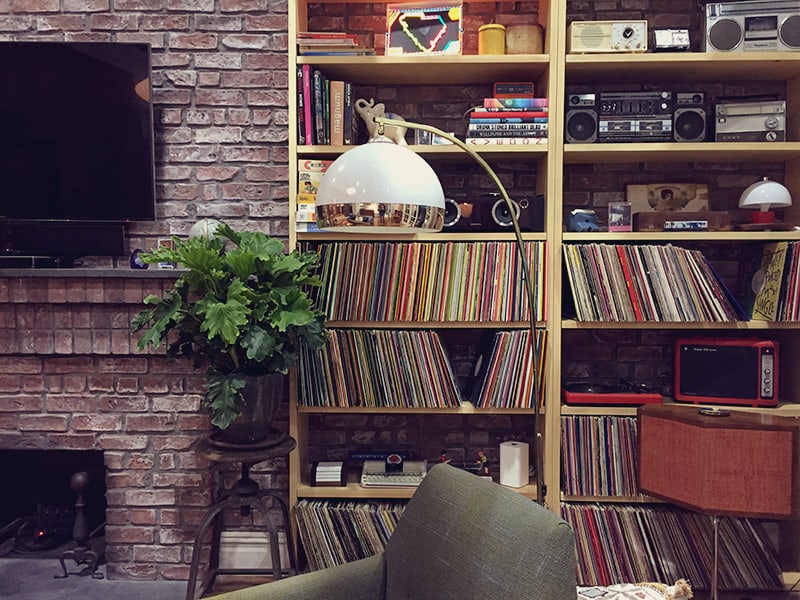

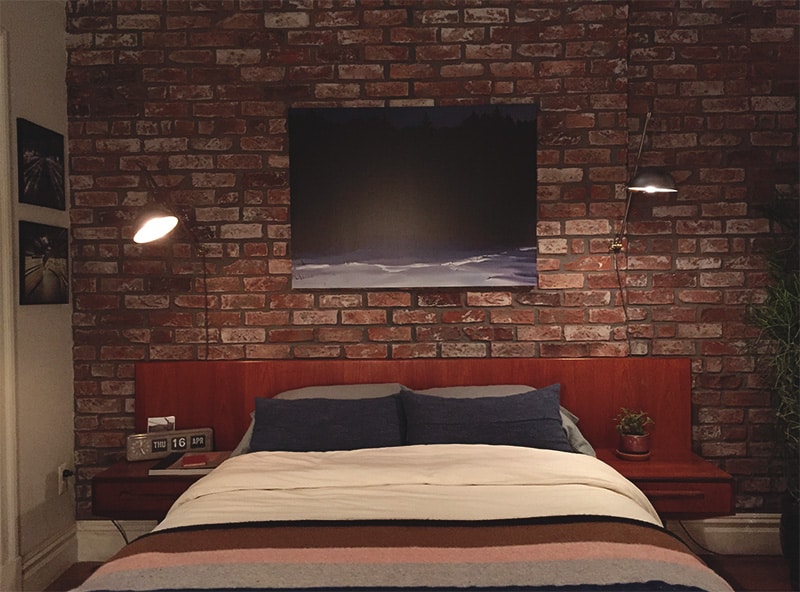

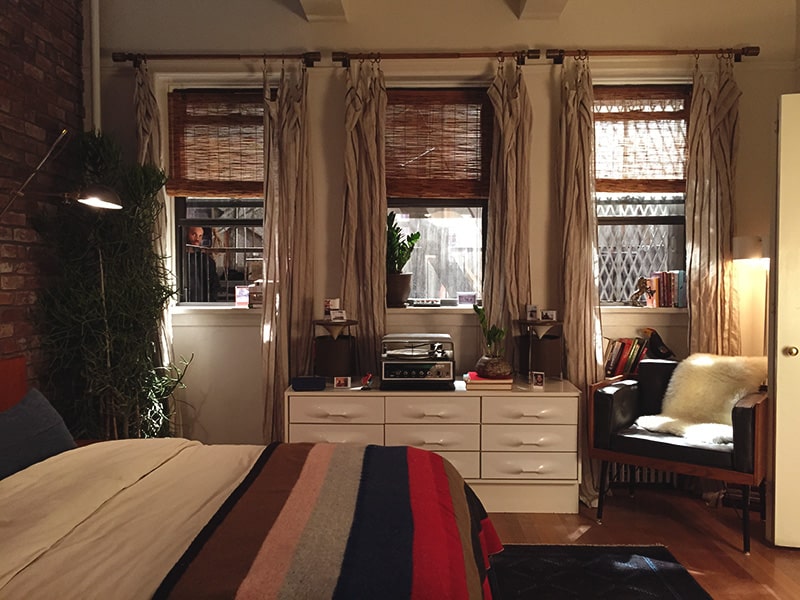













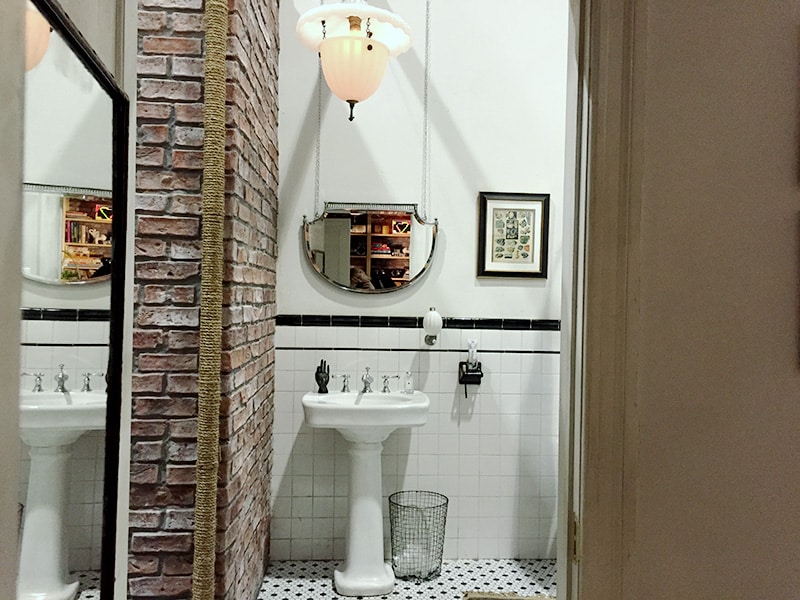



















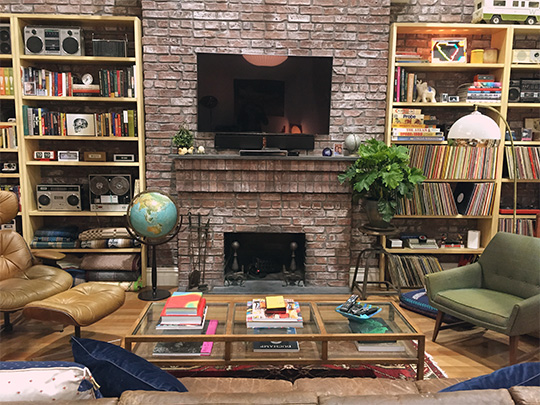


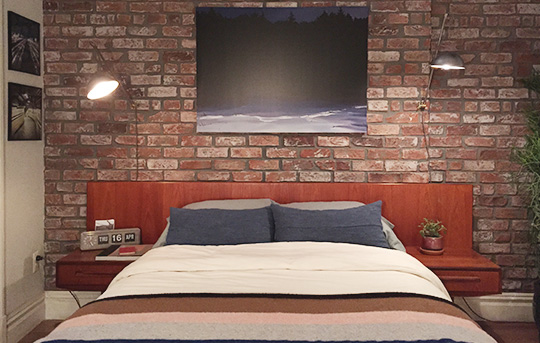














![Types of Jackets: An Encyclopedic Guide to Finding Your Perfect Style + How to Wear Them [28 Styles]](https://www.primermagazine.com/wp-content/uploads/2025/10/jacket-types_feature.jpg)